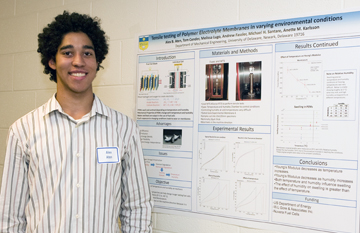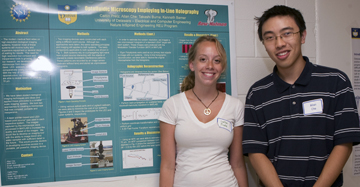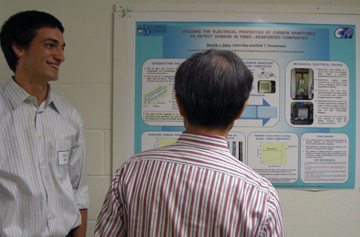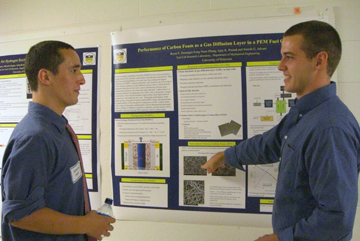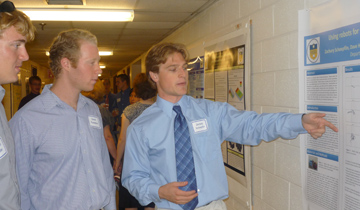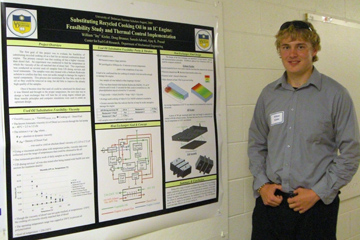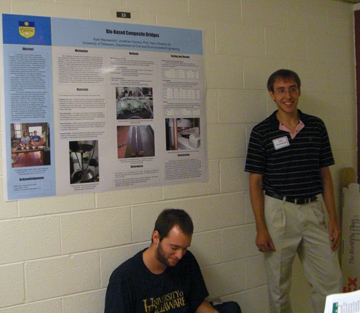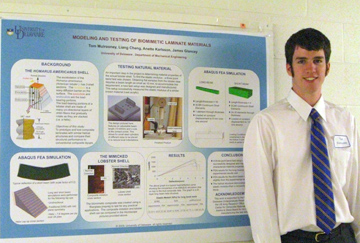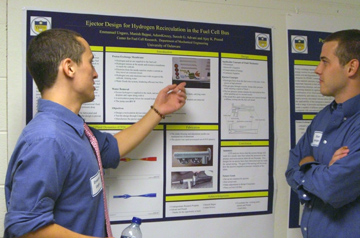| Adelmann | Carrera |
Hennigan | Liang |
Pretz |
Ungaro |
| Aten | Che | Hilgart | Macasevich | Russakow | |
| Baker | Friedrich | Kee | Melrose | Russo | |
| Bonnevie | Gallo | Kistler | Mulrooney, Th | Schoepflin |
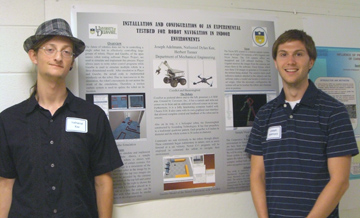 Installation and Configuration of an Experimental Testbed for Robot Navigation in Indoor Environments Joseph Adelmann, Nathaniel Dylan Kee, and Herbert Tanner Department of Mechanical Engineering The future of robotics does not
lie in controlling a single robot but in effectively controlling large
groups of robots. This can be attained through computer programs.
However before using these programs on actual robots, to save time and
energy it is more practical to simulate the results. Player and Gazebo,
of the open source robot testing software Player Project, are used to
accomplish this feat. Player allows users to write robot control
programs in any programming language. Gazebo is used to simulate
multiple robots in a three dimensional world utilizing rigid-body
physics. After simulation in Player and Gazebo, the actual code
is implemented wirelessly on CoroBot. CoroBot is a robot manufactured
by CoroWare, Inc. specifically for research purposes. Due to
inaccuracies in the simulation with respect to real world such as wheel
slippage, CoroBot's movements do not mirror the result of the
simulations. Therefore, a Vicon MX motion capture system
consisting of eight infra-red cameras is utilized to update CoroBot on
its location. This system tracks the motions of the robots relative to
an established origin. The bulk of the work was spent installing the
necessary software and hardware. Then all the systems had to be
interfaced with one another wirelessly. Initial control programs
focused on the robots interacting with their environment i.e.
recognizing obstacles. Future endeavors will utilize this testbed to
simulate and control larger, more diverse groups of robots including
both ground and aerial robots.
|
